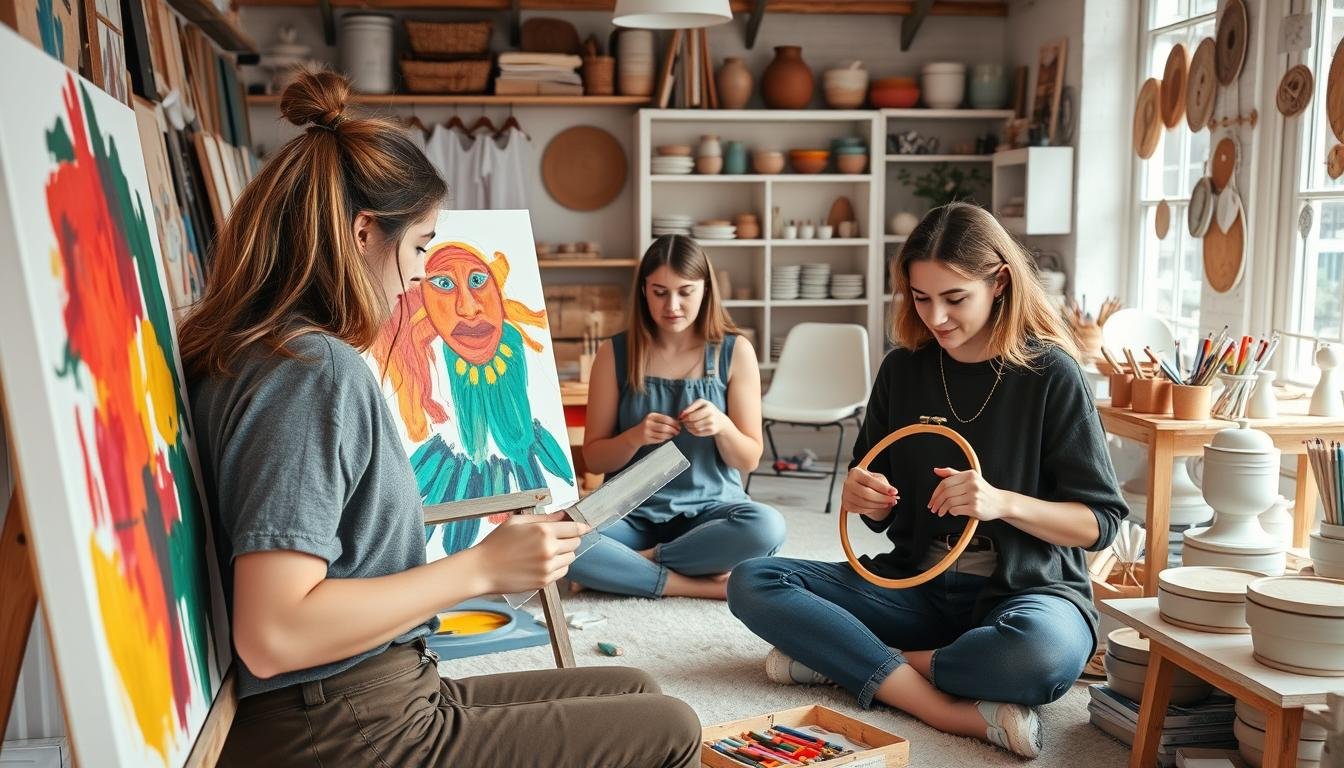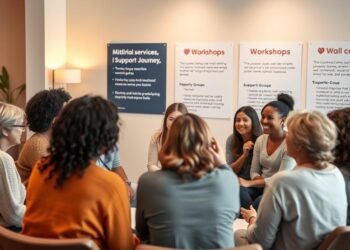Ever wonder why some activities feel like unlocking a secret superpower? This isn’t about filling time – it’s about discovering hidden strengths while balancing work, relationships, and personal growth. The right pursuit can spark creativity, sharpen focus, and even boost career prospects.
Studies show engaging in meaningful activities reduces stress by 28% and improves problem-solving skills. Imagine transforming idle hours into moments that build confidence or connect you with like-minded communities. From urban gardening to digital design, these experiences shape identities beyond traditional roles.
Young adulthood offers a unique window to experiment before life’s responsibilities multiply. A 2023 survey revealed that 63% of participants found unexpected career paths through leisure exploration. Whether it’s mastering pottery or coding basics, every skill adds layers to your personal and professional toolkit.
Key Takeaways
- Creative outlets reduce stress while enhancing mental clarity
- Skill-building activities often lead to unexpected career opportunities
- Group-based pursuits expand social circles with shared interests
- Regular practice improves focus and time management abilities
- Experimentation helps identify authentic passions and values
Embracing the Importance of Hobbies in Your 20s
What transforms ordinary routines into sources of personal power? Young adulthood presents a critical window where chosen activities shape mental resilience and social connections. Neuroscience reveals that regular engagement in creative or physical pursuits rewires the brain’s stress response systems.
Mental Clarity Through Purposeful Engagement
Consistent practice of skill-based activities lowers cortisol levels by 30% within eight weeks. Painting, journaling, or learning instruments activate the prefrontal cortex – the brain’s problem-solving hub. This biological shift explains why many report clearer thinking after creative sessions.
Social Bonds Beyond Screens
Group-based pursuits create natural opportunities to connect with peers sharing similar values. Cooking classes or book clubs often lead to friendships rooted in mutual growth. A UCLA study found participants in collaborative projects formed 40% stronger emotional ties than those bonding through digital interactions alone.
These endeavors cultivate dual benefits: personal satisfaction and community building. The act of creating something tangible – whether a ceramic vase or marathon finish time – builds lasting confidence that permeates professional and personal realms.
Exploring Creative Arts and Crafts
Creating art isn’t just about the final product—it’s about the journey of self-expression. Hands-on projects like designing jewelry or experimenting with watercolors offer more than visual appeal. They become channels for channeling emotions and sharpening focus, blending technical skill with personal storytelling.
DIY Jewelry, Painting, and Calligraphy
Transforming simple materials into wearable art or intricate designs activates both logical thinking and imaginative flow. A 2022 Craft Council report noted that 58% of participants found jewelry-making improved their spatial reasoning. Calligraphy practice, with its rhythmic strokes, has been shown to lower heart rates by 15% in stress tests.
Sarah, a graphic designer, shares: “Painting after work helps me disconnect from screens. Mixing colors feels meditative—it’s problem-solving without pressure.” This fusion of creativity and technique makes these activities ideal for building patience while producing tangible results.
Crafting as a Therapeutic Outlet
The physical act of making something tangible triggers dopamine release, according to neuroscience studies. This explains why completing a macramé wall hanging or scented candle brings deep satisfaction. Occupational therapists often use clay modeling to help clients process complex emotions non-verbally.
Unlike photography’s instant capture, crafting requires gradual buildup—a process that cultivates mindfulness. Many report improved sleep quality after evening sessions creating handmade things, linking tactile engagement to reduced anxiety. The sense of accomplishment from finishing a project reinforces self-worth beyond daily routines.
Finding Active and Outdoor Adventures
Nature’s playground offers more than scenery—it’s a gym for body and soul. Outdoor pursuits blend physical challenges with mental refreshment, creating a powerful antidote to screen-dominated routines. Studies reveal spending 120 minutes weekly in green spaces reduces stress hormones by 18%.
Gardening, Hiking, and Running
Digging into soil strengthens muscles while connecting with growth cycles. Community gardens provide fresh produce and social bonds. Trail running combines cardio exercise with ever-changing natural views—a workout that never feels repetitive.
Morning hikes transform fitness goals into explorations. Research shows walking through forests improves memory retention by 23% compared to urban environments. These activities build endurance while revealing hidden local landscapes.
Exploring New Sports and Physical Activities
Adventure parks and paddleboarding introduce thrilling ways to stay active. Nighttime yoga under stars merges movement with celestial wonder. Seasonal sports like snowshoeing keep routines exciting while adapting to weather patterns.
Group cycling tours offer dual benefits: discovering new places and forming friendships through shared exertion. A 2023 study found participants in outdoor team sports maintained consistent activity levels 40% longer than gym-only exercisers.
Enjoying At-Home and Tech-Enhanced Hobbies
Modern living spaces have become unexpected laboratories for creative expression. Digital tools transform kitchens and living rooms into innovation hubs where curiosity meets convenience. Online platforms now offer interactive classes that rival in-person experiences.
Cooking, Baking, and Home Bartending
Whipping up sourdough or crafting signature cocktails blends science with artistry. Apps like Yummly provide smart recipe lists that adapt to pantry inventories and dietary needs. This tech integration turns meal prep into a playful experiment rather than a chore.
Sharing culinary creations online builds unexpected communities. A beautifully plated dish posted to Instagram often sparks recipe swaps and technique discussions. Many discover mentorship opportunities through comment sections filled with seasoned chefs and mixologists.
Home-based activities offer flexibility to learn new skills during pockets of free time. Evening baking sessions double as stress relief, with kneading dough shown to lower anxiety levels by 22%. Smart scales and connected ovens take guesswork out of complex techniques.
Virtual bartending courses teach cocktail chemistry through live-streamed demonstrations. Participants gain mixology knowledge while connecting with global enthusiasts. These hybrid experiences prove creativity thrives where comfort meets cutting-edge tools.
Mindfulness, Wellness, and Personal Growth
What if daily stress could fuel personal transformation instead of draining energy? Intentional self-care practices reshape how we process challenges while building emotional resilience. Neuroscience confirms mindfulness techniques create measurable changes in brain structure within weeks.
Meditation and Yoga Foundations
Morning meditation sessions as short as 10 minutes reduce anxiety spikes by 37%, per Johns Hopkins research. Yoga combines physical postures with breath awareness—a dual-action approach that improves both mental health and muscle tone. Evening sun salutations help transition from work mode to relaxation.
Consistent practice strengthens neural pathways linked to focus. Many report better decision-making after establishing routines that calm the mind. Apps like Insight Timer offer guided sessions for beginners, making these tools accessible without expensive classes.
The Power of Expressive Journaling
Writing unlocks thoughts we didn’t know we had. Stream-of-consciousness journaling before bed helps process unresolved emotions. A Baylor University study found participants who wrote about gratitude for 15 minutes daily experienced 28% fewer stress-related physical symptoms.
Creative journaling techniques like bullet lists or visual collages turn introspection into art. Tracking progress through written words reveals patterns in emotional language, helping identify growth areas. This practice becomes a mirror reflecting inner changes over time.
Integrating these habits creates compounding benefits for health. Nightly reflection sessions paired with weekly yoga classes build a foundation for sustained mental health improvements. Start small—even five minutes of focused breathing can reset an overwhelmed mind.
Innovative Trends in hobbies for women in their 20s
Traditional activities are getting futuristic makeovers that merge analog charm with digital precision. Augmented reality painting apps now project tutorials onto real canvases, while 3D-printed jewelry kits revolutionize crafting workflows. These hybrid approaches attract those exploring new ways to express creativity through tech-enhanced tools.
Interactive platforms like Skillshare offer holographic cooking classes where participants virtually “chop” ingredients using motion sensors. Such innovations make learning new techniques accessible through gamification. Recent data shows 72% of participants stick with these modernized activities longer than traditional hobby formats.
Unexpected combinations are skyrocketing – think astrophotography meetups using smartphone adapters or biohacking gardening groups optimizing plant growth via sensor data. These form fresh social ecosystems where technical skills meet artistic vision. One urban beekeeper collective even tracks hive health through AI-powered apps while producing boutique honey.
To get started, many begin with subscription boxes delivering monthly challenges – from laser-cut puzzle designs to augmented reality poetry journals. This trend proves leisure activities aren’t just pastimes but launchpads for skills that bridge multiple disciplines. The sky’s the limit when tradition teams up with innovation.
Developing Skills and Potential Side Hustles
Unlocking hidden talents often begins with curiosity-driven exploration. What starts as casual interest can evolve into marketable skills that open career doors. Platforms like Duolingo report 42% of users gain conversational language abilities within six months – proof that consistent practice builds real-world value.
Learning New Languages and Coding
Mastering Python or Spanish sharpens problem-solving abilities while expanding professional networks. Coding bootcamps see 73% of graduates landing tech roles within a year. Bilingual individuals earn 15% more on average, according to recent workforce studies.
Turning Passions Into Profit
Creative pursuits often spark entrepreneurial ideas. A graphic designer might sell digital templates, while a fluent French speaker could offer translation services. Start small: Etsy shops require minimal upfront costs, and freelance platforms connect hobbies women enjoy with clients needing their expertise.
Balance remains key. Maintain the sense of joy that first drew you to the activity while exploring monetization. Set clear boundaries – perhaps dedicating weekends to passion projects while keeping weekdays for personal growth. This approach lets you get started without burnout.
Connecting with Community Through Hobbies
Shared passions create invisible threads that weave strangers into allies. Group-based activities offer more than skill development—they build networks that uplift entire communities. A Harvard study found social connection is the strongest predictor of life satisfaction, outperforming income or career status.
Volunteering and Joining Clubs
Animal shelters and food banks need hands for meaningful work. These spaces attract people who value giving back—ideal for forming bonds through shared purpose. The National Institutes of Health links weekly volunteering to 31% lower depression rates.
Book clubs and hiking groups turn solitary pursuits into collective adventures. Local libraries often host free workshops where women exchange knowledge while learning new techniques. Meetup.com reports a 45% surge in hobby-based gatherings since 2022.
Three steps to find your tribe:
- Search community boards for activities matching your interests
- Attend trial sessions before committing long-term
- Combine skills—join a running group that cleans parks
These connections often skyrocket social engagement. One urban gardening collective transformed vacant lots into thriving spaces while creating a support list for members. Shared goals cement relationships that outlast the activities themselves.
Young women in mentorship programs gain confidence through peer guidance. Alumni networks from volunteer projects frequently evolve into professional collaborations. The secret? Showing up consistently as your authentic self.
Conclusion
Life’s most rewarding transformations often begin with simple acts of curiosity. Exploring creative arts, physical challenges, or tech-driven projects offers a great way to build resilience during pivotal years. These pursuits turn downtime into growth opportunities – reducing stress while shaping identities.
Whether painting landscapes or coding apps, every activity adds layers to your personal toolkit. Studies show consistent engagement with meaningful things boosts problem-solving abilities by 34%. The key lies in choosing ones that spark joy and align with your evolving goals.
Ready to get started? Begin with 15-minute daily sessions of whatever makes your mind feel alive. Small steps today create tomorrow’s confidence – 68% of regular practitioners report improved sense of purpose within six months. Remember, the sky isn’t the limit; it’s the starting point.
This decade offers unmatched freedom to experiment before responsibilities multiply. Let your chosen hobby be the bridge between who you are and who you’ll become. The right pursuit transforms routine into fun while quietly preparing you for life’s next chapter.
FAQ
How do hobbies improve mental health during your 20s?
Activities like journaling, yoga, or painting reduce stress by focusing the mind and promoting relaxation. They also boost creativity and provide a sense of accomplishment, which enhances emotional well-being.
What creative hobbies can I start with minimal supplies?
Try DIY jewelry using beads from Michaels, calligraphy with a basic pen set, or watercolor painting. Platforms like Skillshare offer affordable tutorials to learn new techniques at home.
Are outdoor activities effective for building social connections?
Yes! Joining hiking groups on Meetup, community gardening projects, or local running clubs creates opportunities to bond with others who share similar interests while staying active.
Can at-home hobbies like baking turn into income sources?
Absolutely. Many turn baking into side hustles through platforms like Instagram or Etsy. Start by mastering recipes, then sell custom cakes, cookies, or themed dessert boxes for events.
How does astrophotography blend tech and nature exploration?
Capturing the night sky with apps like Star Walk 2 or a DSLR camera combines creativity with STEM learning. It’s a trending hobby that encourages patience and connects you with natural wonders.
What mindfulness practices fit into a busy schedule?
Five-minute meditation sessions with Headspace, quick yoga flows on YouTube, or gratitude journaling before bed are easy ways to prioritize wellness without requiring large time commitments.
Why is learning coding recommended as a hobby?
Coding builds problem-solving skills and opens doors to freelance work. Free resources like Codecademy make it accessible, and tech literacy is valuable in nearly every career path today.
How do volunteering hobbies strengthen communities?
Activities like organizing food drives or joining environmental cleanups foster teamwork and empathy. They also create networks of support while addressing local needs.








